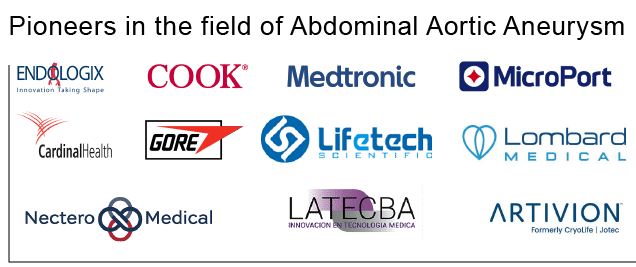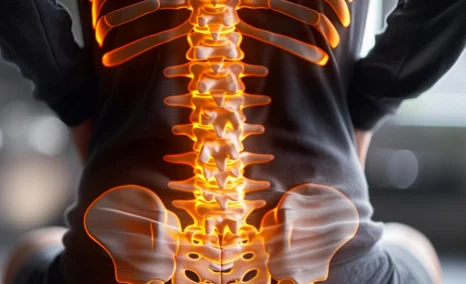Discovering the Latest Developments in the Rapidly Advancing Abdominal Aortic Aneurysm Treatment Landscape
May 16, 2022
The heart is the most important muscle in the body. The aorta is the largest artery in the body and is the blood vessel that carries oxygen-rich blood away from the heart to all body parts. The section of the aorta that runs through the chest is called the thoracic aorta, and as the aorta moves down through the abdomen, it is called the abdominal aorta. Aneurysms that occur in the section of the aorta that runs through the abdomen (abdominal aorta) are called Abdominal Aortic Aneurysms (AAA). Aneurysms are often detected while performing tests for entirely different reasons. Abdominal Aortic Aneurysms treatment is safe and effective and the aneurysm is very much curable if Abdominal Aortic Aneurysms diagnosis is done earlier. In the majority of cases, there will be no Abdominal Aortic Aneurysms symptoms or only some minor symptoms, such as a gnawing feeling around the stomach or a throbbing sensation in the abdomen. Some of the major Abdominal Aortic Aneurysm causes include Atherosclerosis (hardening of the arteries), high blood pressure, and others. Abdominal Aortic Aneurysm risk factors mostly include aspects such as male gender, family history, and smoking habits.
Many times, Abdominal Aortic Aneurysms diagnosis is incidentally carried out on ultrasound examinations, x-rays, or CT scans, and the patient is often being examined for an unrelated reason. Currently, there is no FDA-approved drug therapy to limit the Abdominal Aortic Aneurysms progression. As an aneurysm grows in size, the aorta wall becomes weaker and weaker, which means surgical intervention may be needed. Abdominal Aortic Aneurysm surgery can even lead to serious complications. The goal of the Abdominal Aortic Aneurysm treatment strategy is to prevent the rupture of an aneurysm by controlling its growth. If a large Abdominal Aortic Aneurysm is detected before it ruptures, most people will be advised to have treatment to prevent it from rupturing.
Abdominal Aortic Aneurysm Epidemiology and Statistics
Downloads
Click Here To Get the Article in PDF
Abdominal Aortic Aneurysms typically develop slowly over a period of many years and hardly ever cause any noticeable symptoms. Occasionally, especially in thin patients, a pulsating sensation in the abdomen may be felt. The larger an aneurysm grows, the greater the chance it will burst or rupture.
As per DelveInsight, Abdominal Aortic Aneurysm prevalence in the 7MM countries was estimated to be 1,641,380 cases in 2021 and is expected to increase during the study period. Also, DeveInsight’s analysis suggests that the total diagnosed prevalent Abdominal Aortic Aneurysm cases in the US were estimated to be 752,408 in 2021 which is the highest among all the 7MM countries.
According to DelveInsight’s epidemiological statistics, in Abdominal Aortic Aneurysms, there were around 530,177 cases of males whereas 222,232 cases of females were observed in the US.
Among the European five countries, DelveInsight analyzed that the total prevalent population of Abdominal Aortic Aneurysm (AAA) is highest in Germany was 192,532 cases, followed by France with 138,193 cases, and then Italy constituted with 68,202 as the lowest prevalent cases among the EU-5 countries. Total prevalent Abdominal Aortic Aneurysm (AAA) population in Japan was estimated to be 253,883 cases in 2021 and is expected to decrease in during the forecast period. Abdominal Aortic Aneurysm epidemiology segmentation can be done on the basis of Diagnosed Prevalence of Abdominal Aortic Aneurysm, Size-specific Diagnosed Prevalence of Abdominal Aortic Aneurysm, Gender-specific Diagnosed Prevalence of Abdominal Aortic Aneurysm, Treatable population of Abdominal Aortic Aneurysm.
Abdominal Aortic Aneurysm Market Landscape
An increase in Abdominal Aortic Aneurysm market size is anticipated to grow in the coming years. The Abdominal Aortic Aneurysm market is expected to show positive growth, mainly attributed due to factors such as an increase in the patient pool, expected entry of emerging therapies, increased diagnosed prevalence, and also, the launch of upcoming therapies and devices. According to DelveInsight’s analysis, the Abdominal Aortic Aneurysm market size in the 7MM countries was estimated to be USD 1,579.9 million in the year 2021. Also, as per the analysis, Abdominal Aortic Aneurysm market size in the US was estimated to be USD 1065.7 million in the year 2021. The Abdominal Aortic Aneurysm market size in Japan was found to be USD 137.8 million.
Many key pharmaceuticals that are proactively involved in producing Abdominal Aortic Aneurysm therapies in the coming years include names such as Endologix LLC, Cardinal Health, Cook Medical, W. L. Gore & Associates, Inc., Medtronic, MicroPort Scientific Corporation, Artivion, Inc., Lifetech Scientific (Shenzhen) Co., Ltd. Lombard Medical, Endologix LLC, Latecba SA, Nectero Medical, Cardiatis, SA, Hangzhou Endonom Medtech Co., Ltd. whose key Abdominal Aortic Aneurysm treatment therapies are expected to be launched in the coming years and can also serve as a major booster for Abdominal Aortic Aneurysm treatment market.

Current Abdominal Aortic Aneurysm Treatment Landscape
At present, there is no FDA-approved Abdominal Aortic Aneurysm therapy for limiting the growth. If the aneurysm is less than 5 cm or 2 inches, the doctor might try to treat it with medication first. They might prescribe drugs, such as beta-blockers and calcium channel blockers, to lower the blood pressure and relax the blood vessels. These medications will lessen the chance of rupture of the aneurysm. Indeed, several therapeutic effects of pharmacological agents have been reported in experimental models, and some agents have undergone clinical trials. Abdominal Aortic Aneurysm treatment with statins, angiotensin-converting enzyme inhibitors, antibiotics, and anti-inflammatory agents appears to inhibit the Abdominal Aortic Aneurysm growth rate in humans. The doctor will continue to monitor the person regularly to see whether or not the aneurysm is growing. Heavy lifting, which puts pressure on the aorta, is advised to be avoided. Specific Abdominal Aortic Aneurysm treatment is based on age, overall health, medical history, the extent of the disease, signs and symptoms, tolerance of specific medications, procedures, or therapies, expectations for the course of the disease, and opinion or preference.
Abdominal Aortic Aneurysm treatment to prevent aneurysm rupture can be achieved through elective repair. Repair options are an open surgical repair or an EVAR procedure. These procedures vary in terms of risks and optimal outcomes.
Hydroxymethylglutaryl-coenzyme is a reductase inhibitor, also known as statins, which are widely prescribed for their lipid-lowering effects. Although the reduction of lipid levels prevents the progression of atherosclerosis, additional effects of statins, so-called pleiotropic effects, have been increasingly recognized in recent years for Abdominal Aortic Aneurysm treatment.
Both angiotensin-converting enzyme (ACE)-inhibitors and Ang II receptor blockers (ARBs) are currently widely used in the cardiovascular diseases treatment, such as hypertension and chronic heart failure. The presence of micro-bacterial organisms has been found in the aneurysm wall as well as in atherosclerotic plaque. It has been reported that aneurysm progression correlated with evidence of chronic Chlamydia pneumonia infection. Prostaglandins act as a class of biological mediators in the process of inflammation, including MMP production, and are converted from arachidonic acid by cyclooxygenase (COX) and terminal prostaglandin synthases.
Open surgical repair is performed requires general anesthesia, longer surgical time (i.e., 4–5 h longer or more), and a large surgical incision to expose the abdominal aorta. In open surgery, the aneurysm is removed and replaced by an artificial vessel (tube made of synthetic material). It is performed under general anesthesia.
In a nutshell, it can be summarized that as a result of the discovery of new aspects of Abdominal Aortic Aneurysm etiology more potential therapeutic targets are being identified leading to a surge in potential therapies and devices being investigated for the management of Abdominal Aortic Aneurysm (AAA). It is safe to predict that the Abdominal Aortic Aneurysm treatment space will experience significant reconstitution in the coming years.
Emerging New Devices in Abdominal Aortic Aneurysm Treatment Pipeline
In order to combat the current unmet needs of the Abdominal Aortic Aneurysm treatment market and to provide better treatment options, several major pharma players are working aggressively to develop new Abdominal Aortic Aneurysm emerging devices namely Abdominal Aortic Aneurysm Stent Graft System (Lifetech Scientific), Fenestrated AlturaTM FEVAR Stent Graft (Lombard Medical), Seta Latecba Stent Grafts (Latecba SA), Nectero EAST® (Nectero Medical), Bifurcated MFM® (Cardiatis) and others. The available therapeutics treatment options in the Abdominal Aortic Aneurysm (AAA) landscape aim to reduce the disease burden. There are many Abdominal Aortic Aneurysm novel devices under development, which include –
Lifetech Scientific’s Abdominal Aortic Aneurysm Stent Graft System is indicated to treat patients with an infrarenal Abdominal Aortic Aneurysm. On September 30, 2018, Lifetech Scientific initiated its trial to evaluate the safety and efficacy of the AAA Stent Graft System for the infrarenal Abdominal Aortic Aneurysm.
Endovascular treatment of aortic diseases has improved in recent years. Fenestrated Endovascular Aortic Aneurysm Repair (FEVAR), developed by Lombard Medical is an almost new minimally invasive technique for repairing thoracoabdominal or complex Abdominal Aortic Aneurysm.
Endologix LLC, a leader in the treatment of vascular disease, is developing the ChEVAS system, an endovascular abdominal aortic aneurysm therapy designed to combine the Nellix 3.5 endograft with parallel visceral stents to enable juxta-renal, pararenal, and suprarenal Abdominal Aortic Aneurysm treatment.
Seta Latecba Stent Grafts being developed by Latecba is an endovascular system for treating arteries. The stent system is used to make an internal tunnel that allows blood to flow inside the prosthesis, avoiding the pressurization of the aneurysm and, therefore, its rupture. It has high radial resistance to crushing due to its design. The stents that form its metallic skeleton impact against the arterial wall, stabilizing the device in that position. This allows an excellent fixation and sealing, being unnecessary the use of hooks or the use of polymers.

Way Ahead
Advances in disease mechanisms have yielded new diagnostic and therapeutic approaches in the field of Abdominal Aortic Aneurysm, opening the way to more medicine and device development. Due to the unavailability of any approved drug therapy, there is an abundance of scope for entry of novel Abdominal Aortic Aneurysm treatment therapies into the market. The Abdominal Aortic Aneurysm market is expected to show positive growth, attributed to factors such as the increased diagnosed prevalence, the launch of upcoming therapies, and devices in the coming years, and the introduction of new endograft models on a commercial level. Other major factors constitute the rise in the increasing prevalence of Atherosclerosis, the rising geriatric population, and technological advancements in the medical devices, as well as heightened applications of magnetic resonance angiography that are anticipated to lead to a great surge in the Abdominal Aortic Aneurysm treatment market.



